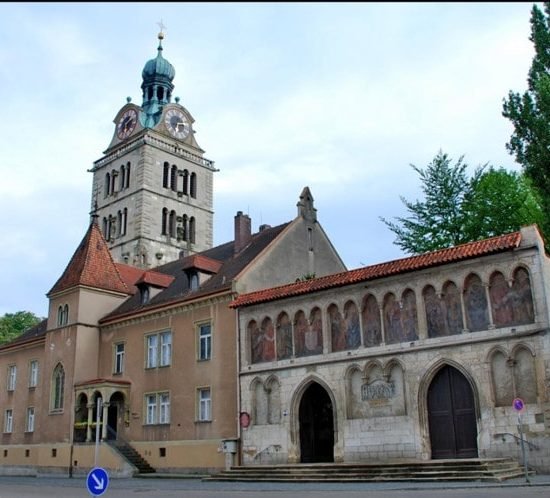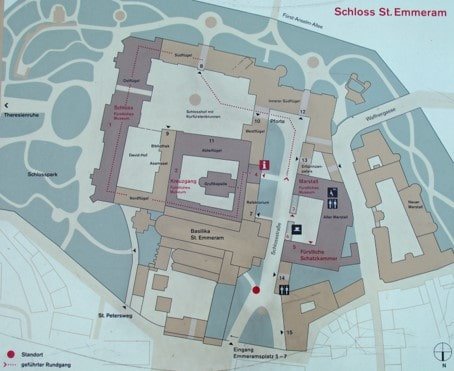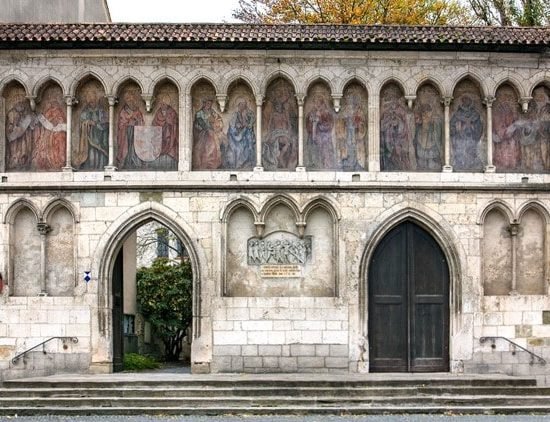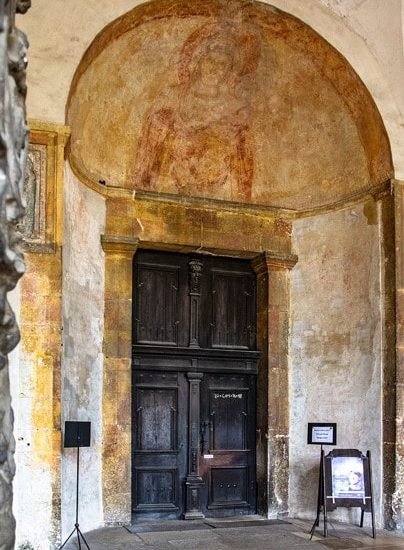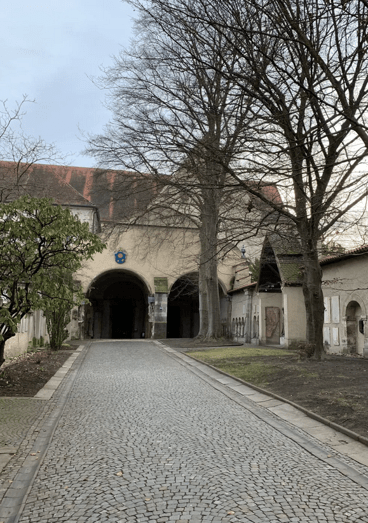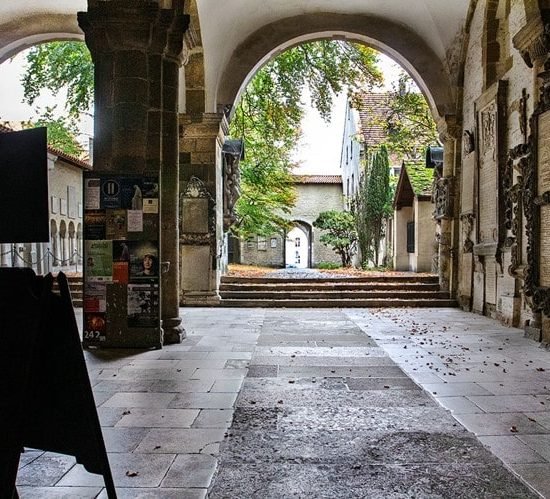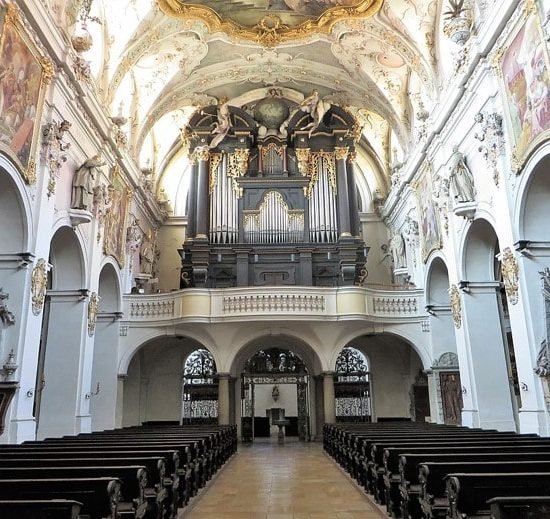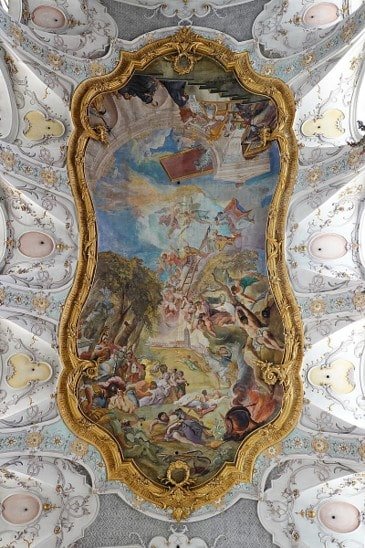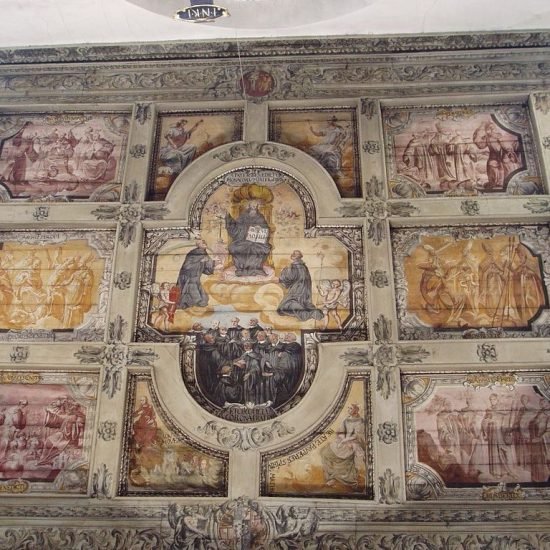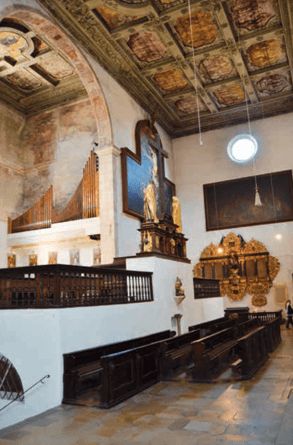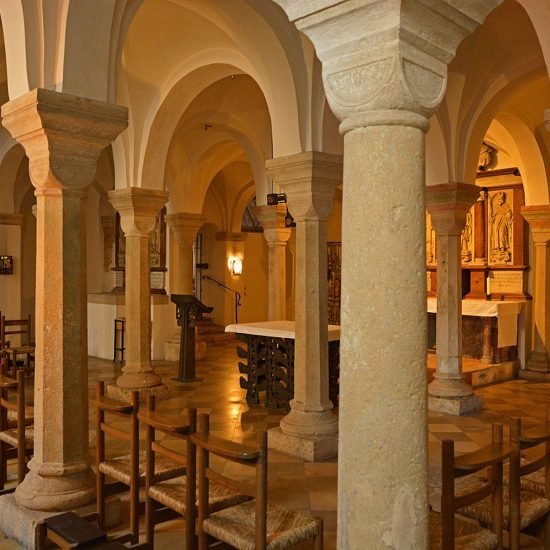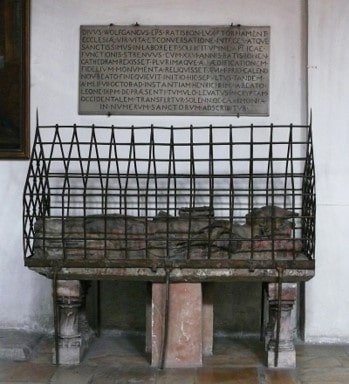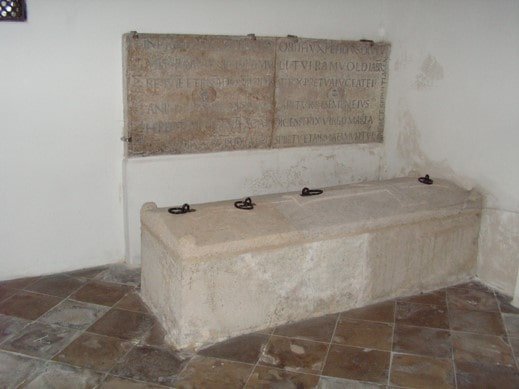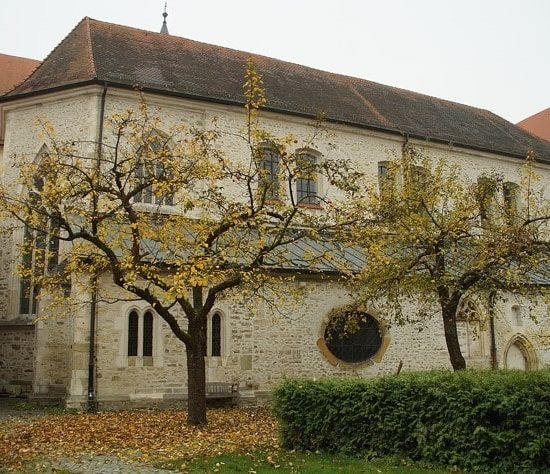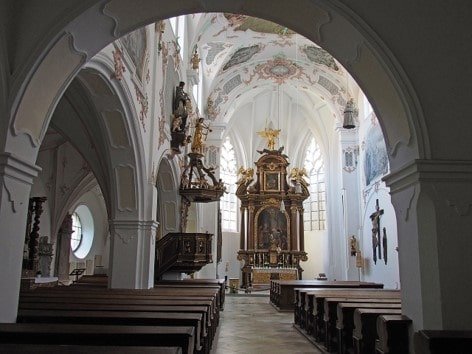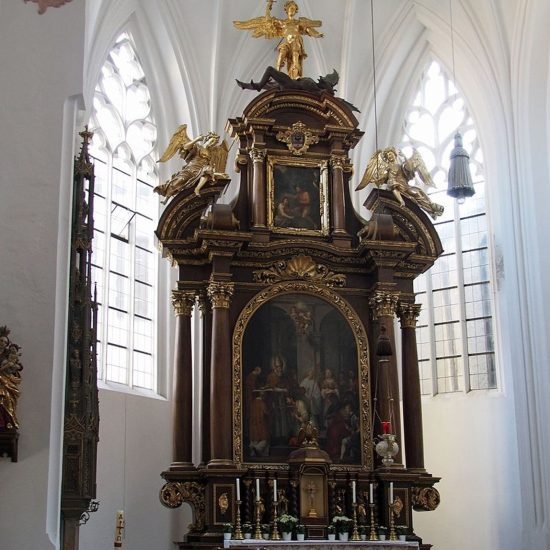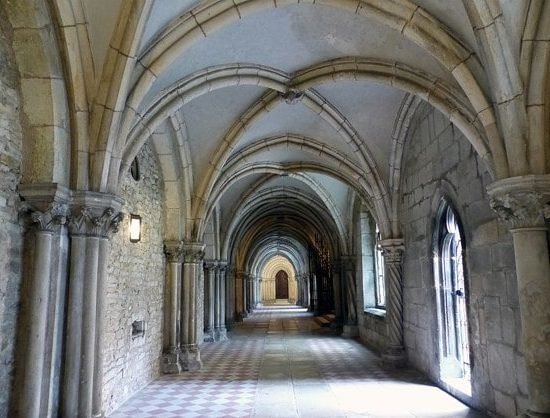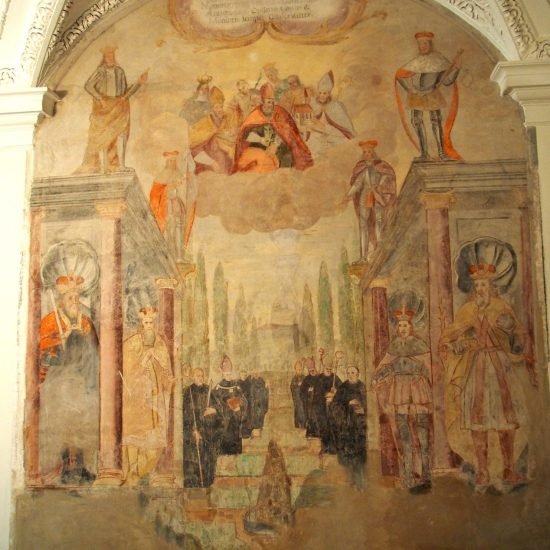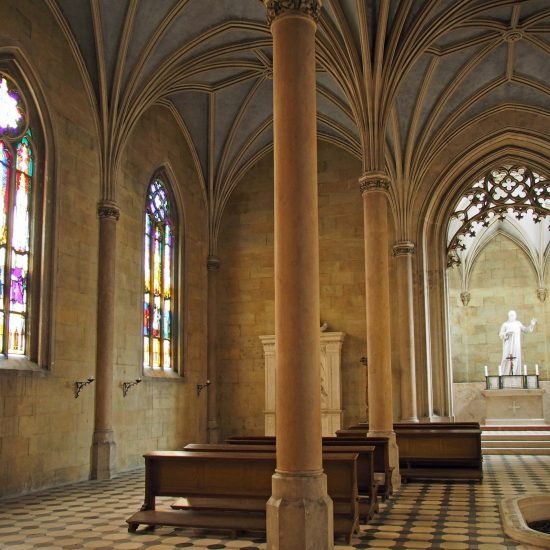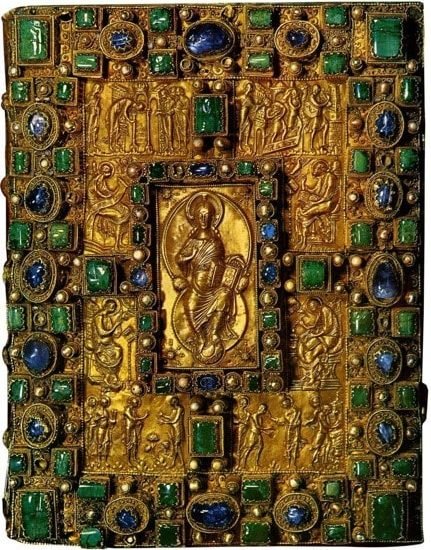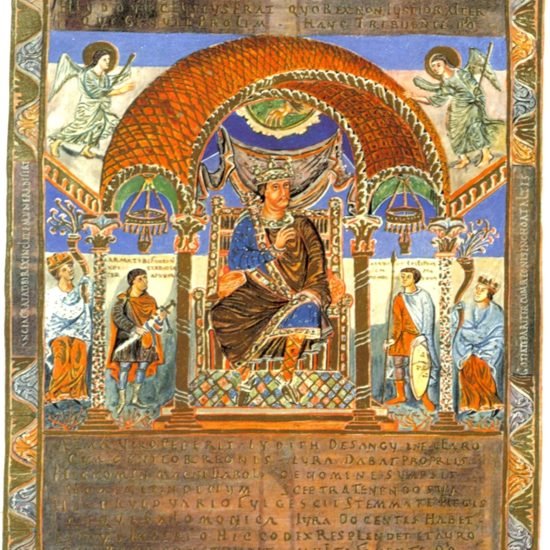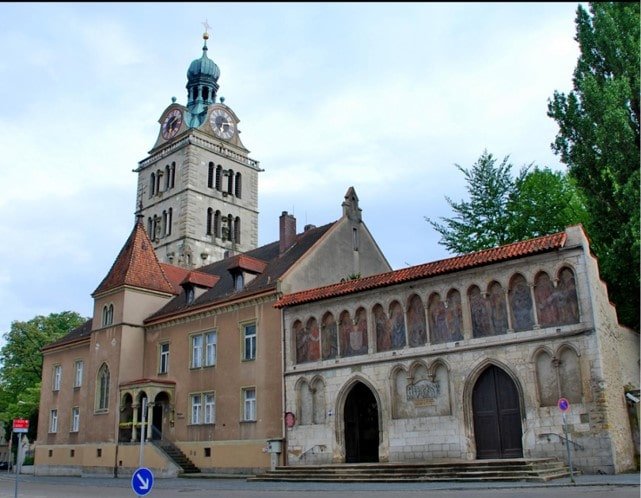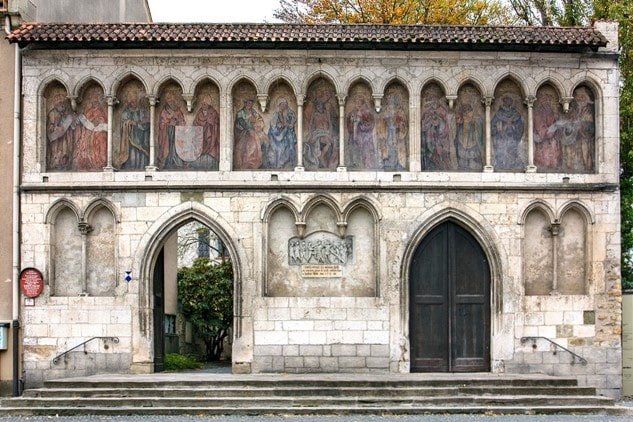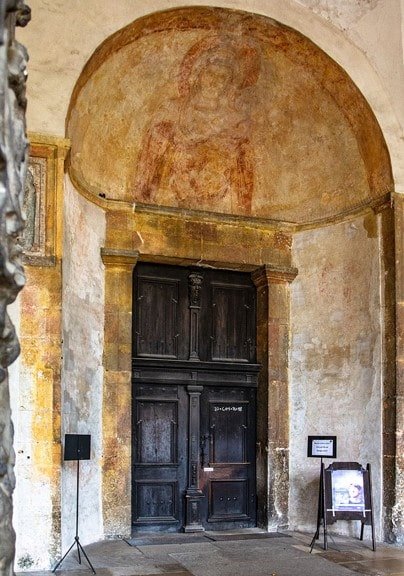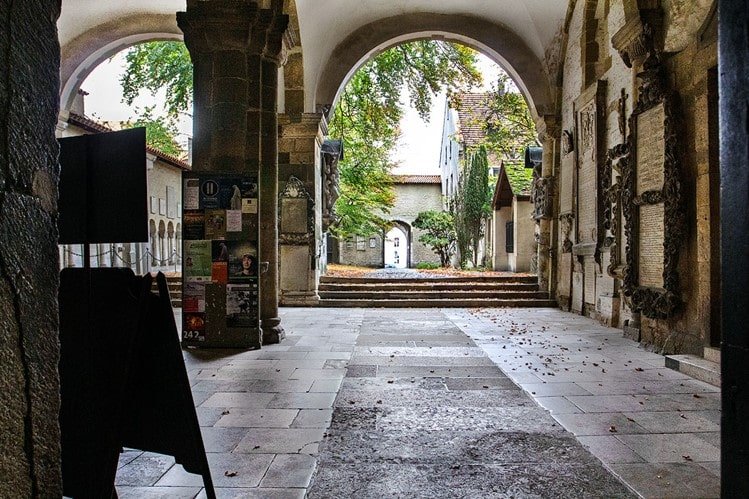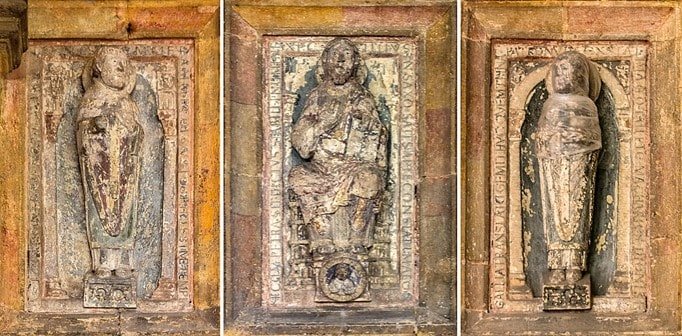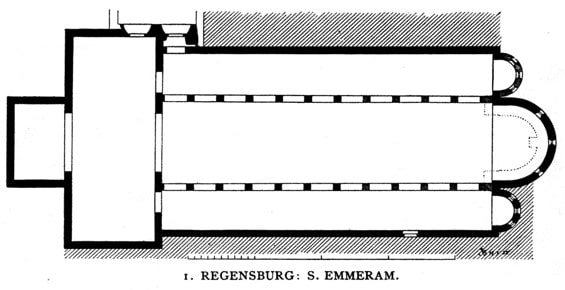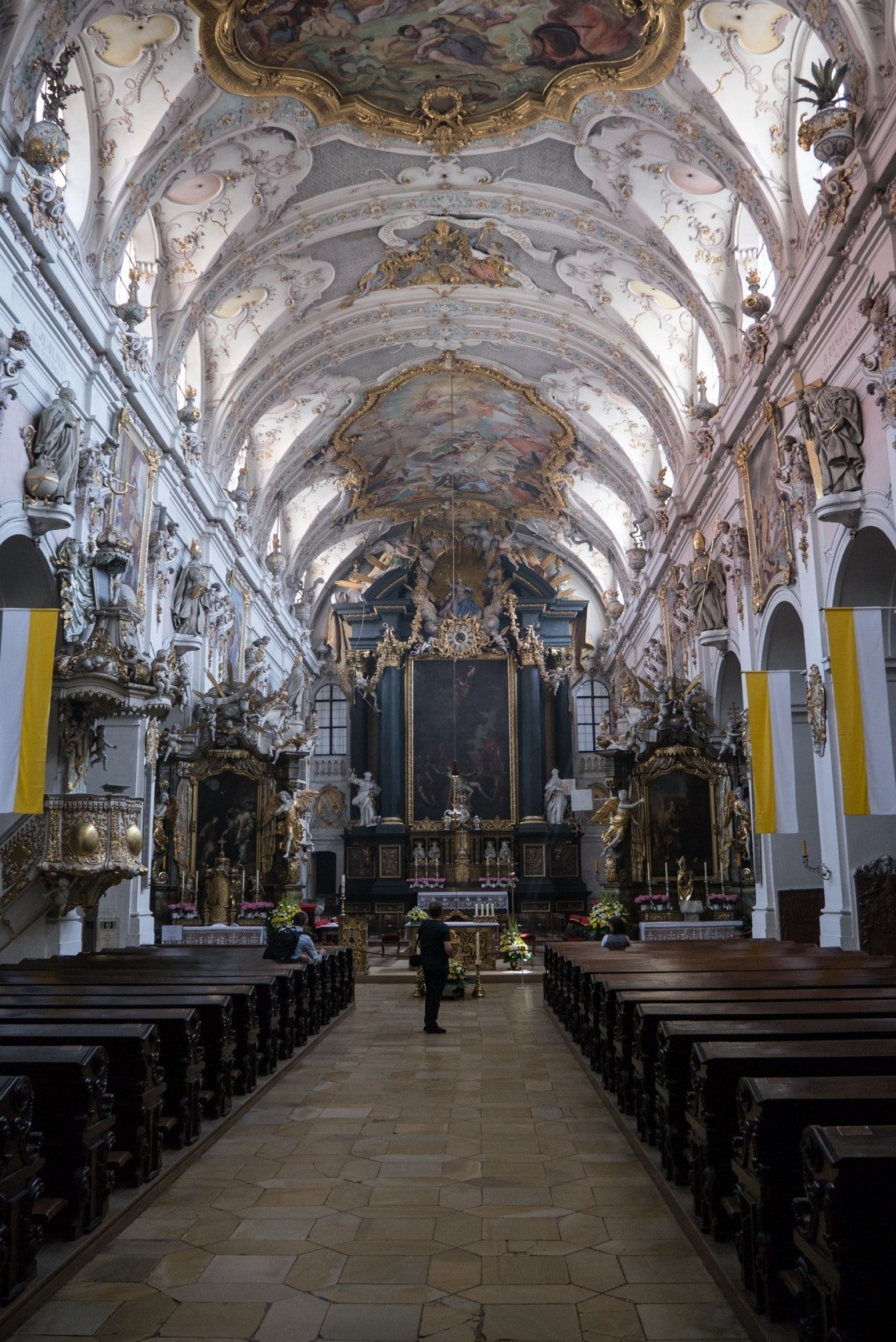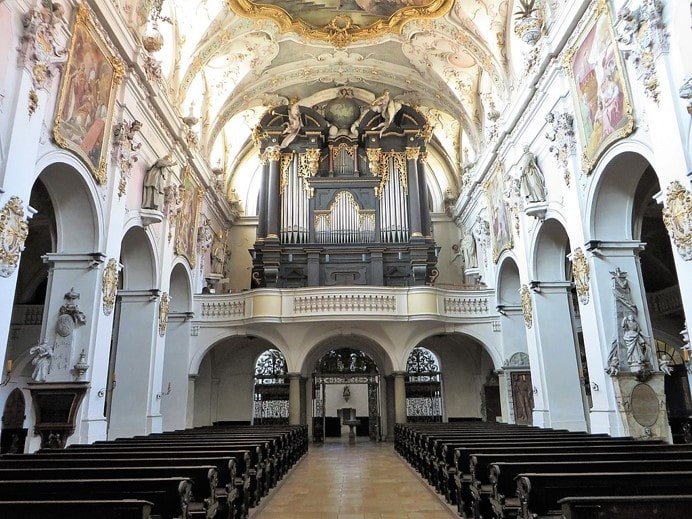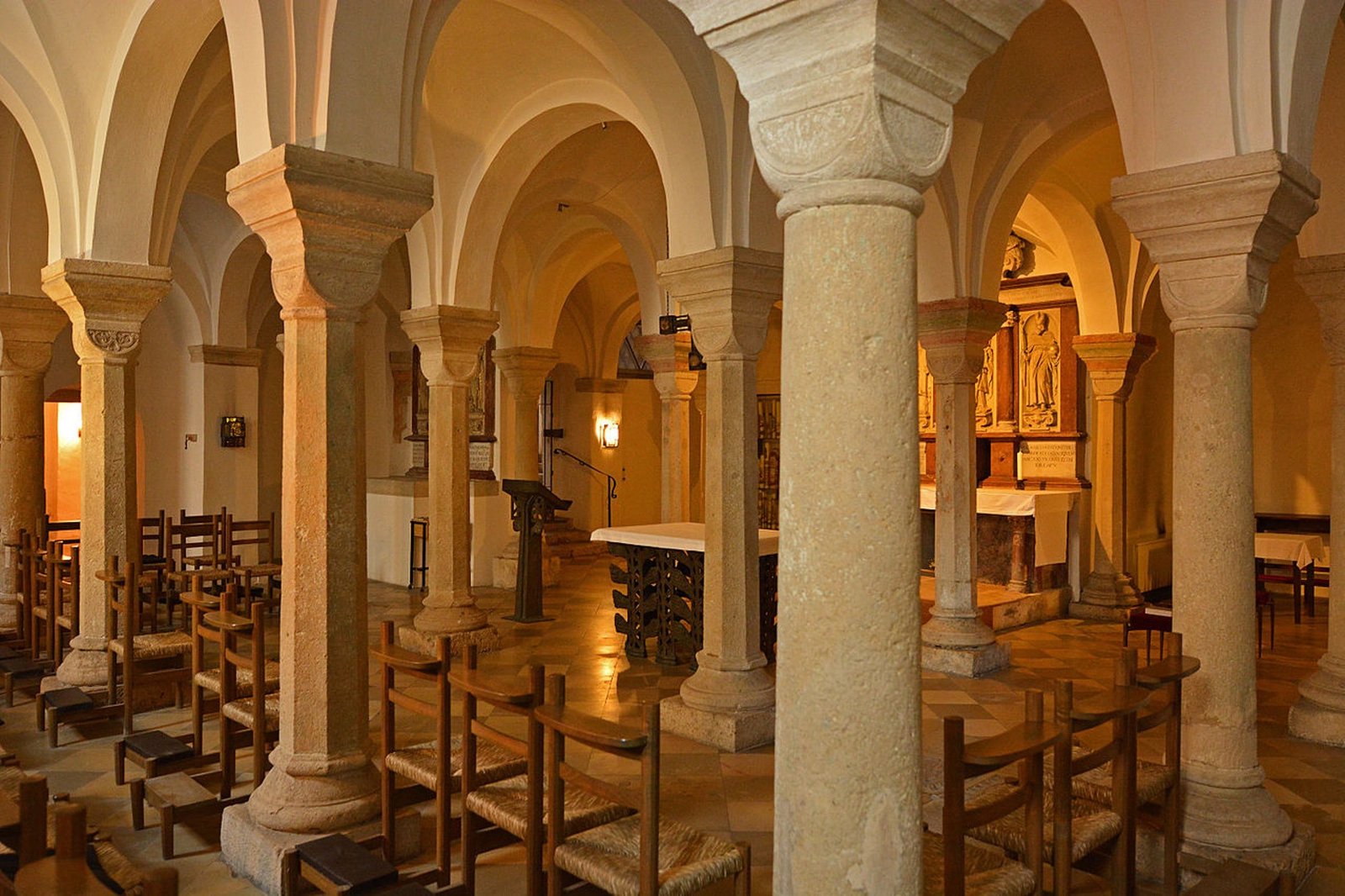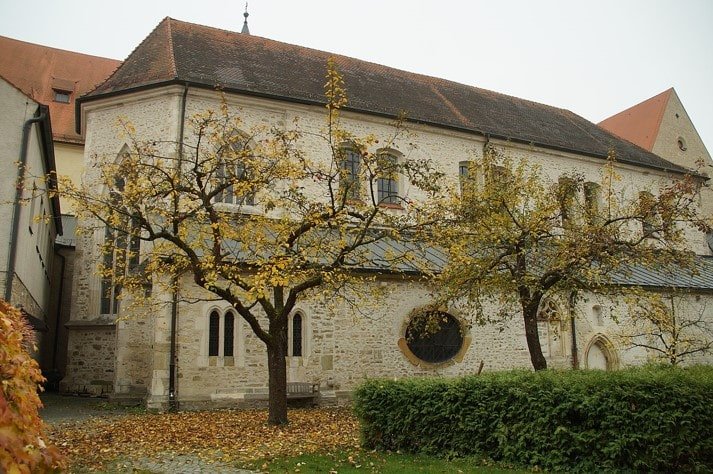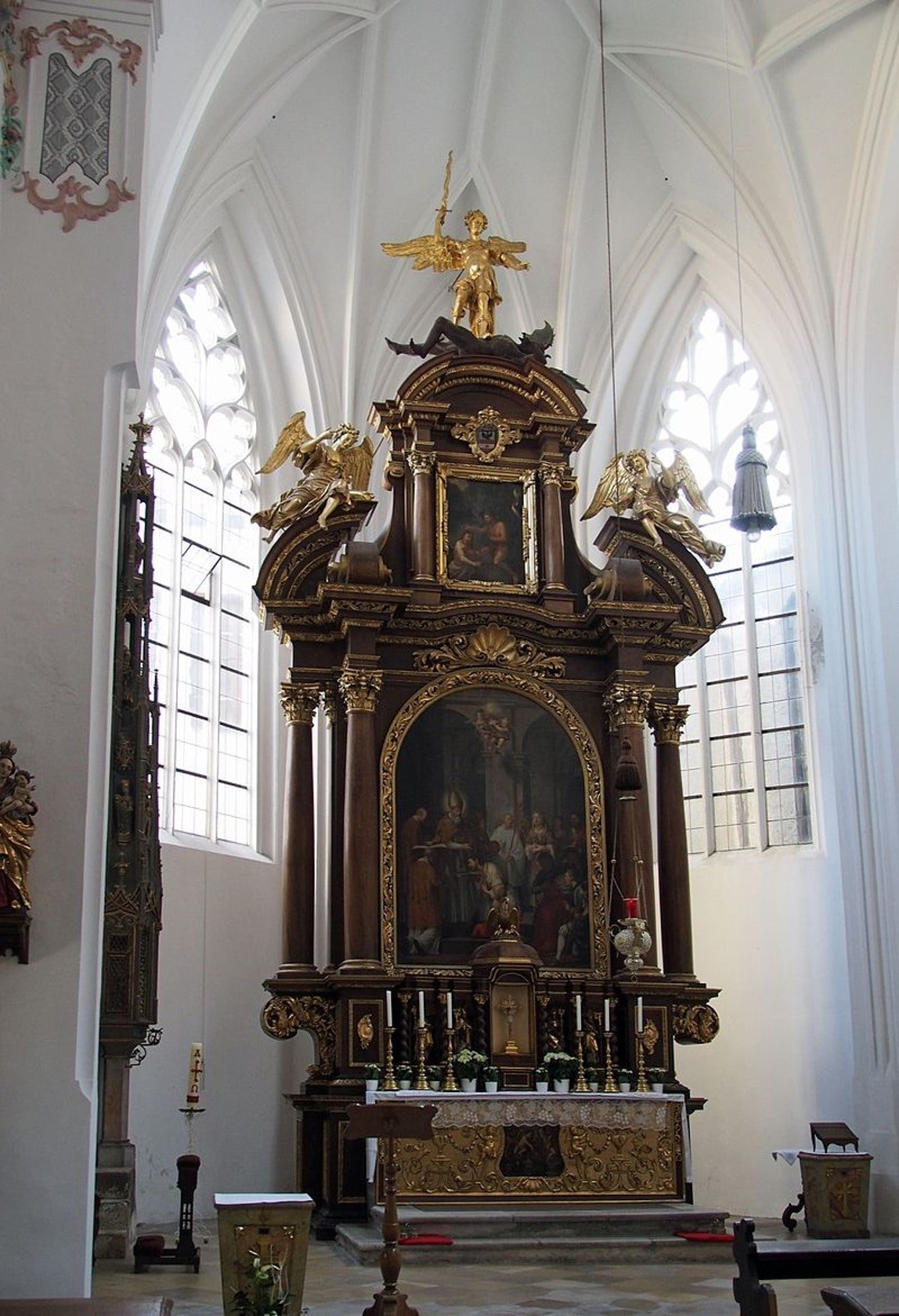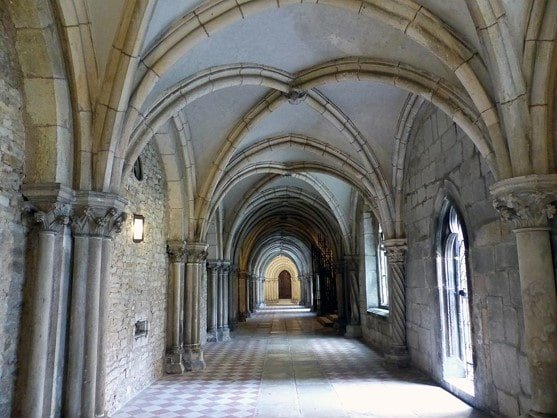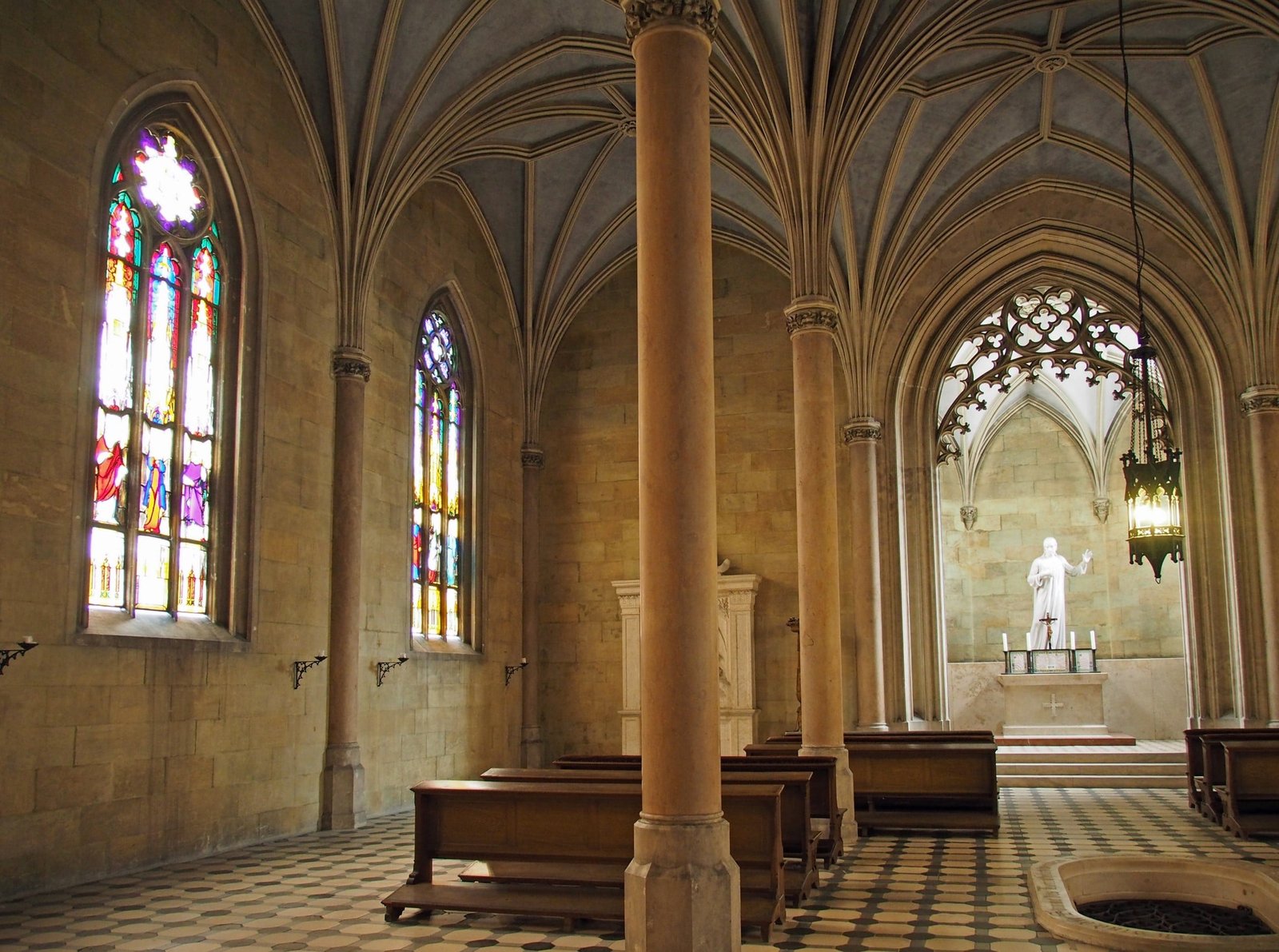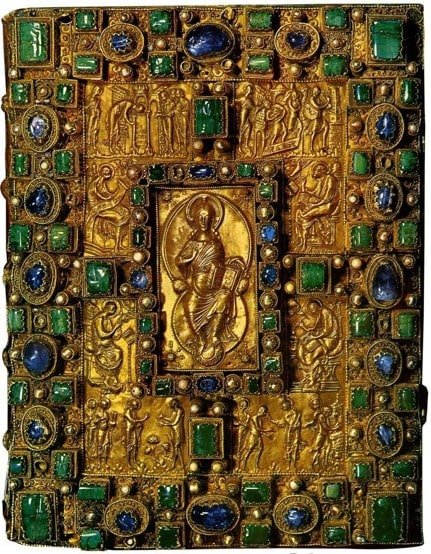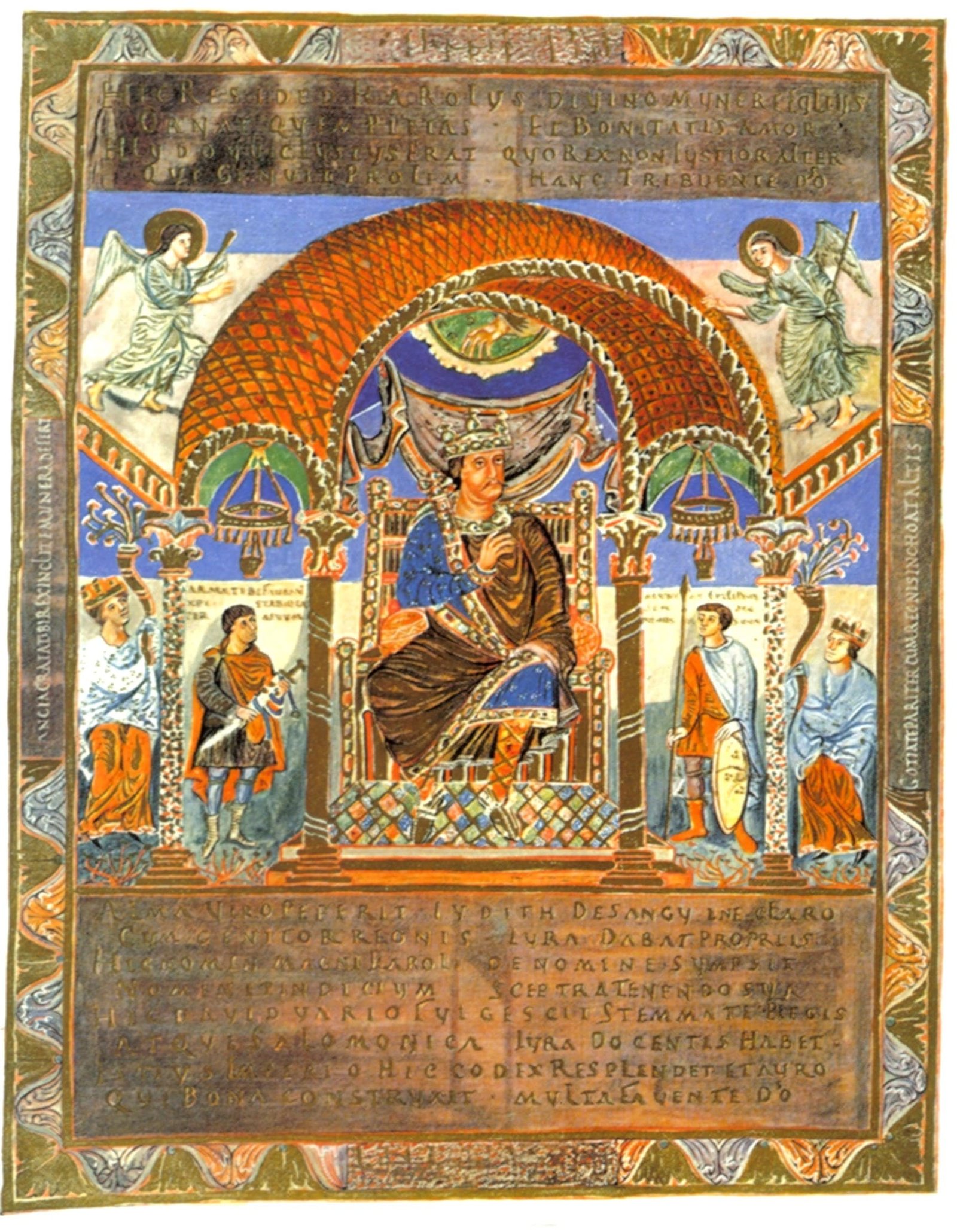The Benedictine Abbey of St. Emmeram in Regensburg
per person
The monastery of St. Emmeram is situated within the old center of Regensburg in the province of Bavaria. Regensburg can trace its history back to antiquity, when it was founded as a fortress for the Roman Legio III Italica in 170. Soon after, a civilian municipality was founded just westwards from the fortress. During the early middle ages, Regensburg was a comparatively large city with still intact fortifications and walls hailing from Roman times and as such it was chosen as the main residence of the ruling dynasty of the Bavarians – the Agilolfingers. Accordingly, the early history of the abbey of St. Emmeram saw close relations with the dukes of Bavaria. In fact, the affiliation of Saint Emmeram with the Agilolfingers goes back even further than the foundation of the actual monastery.
St. Emmeram – hailing from a wealthy Frankish family– was a representative of his time, i.e. the 7th century. According to his Vita, in his earlier life, having first risen to the honour of the bishopric of Poitiers in Aquitania, he sought to seek God as an ascetic and bring the Christian faith to the Avars in Hungary. Inspired by the preregrinatio of the wandering Irish monks in the tradition of St. Columban, who held prominence in the intellectual and spiritual life of Western Europe, Emmeram cut ties to his worldly attachments and began wandering towards his destination.
However, before he could reach Hungary, duke Theodo I of Bavaria sought to bring Emmeram into his service, who then redirected his missionary work to the rural Bavarians who were still keeping to their old pagan traditions. The story goes on about how Ota, Theodos‘s daughter, had a secret liaison with the son of a judge and as the couple was expecting a child, they feared being put to death as punishment and pleaded to the Saint for help. Moved by compassion, Emmeram proposed to take the blame on himself. When Lantpert, Theodo‘s son, was made aware of the incident, Emmeram was already on a pilgrimage to Rome and interpreting this as an attempted flight, he pursued and executed the monk near Munich. Soon enough, however, Theodo, realizing the true course of events, brought Emmeram to Regensburg and buried him in the crypt of the later monastery. Thus, thanks to the presence of this famous Saint, the benedictine monastery, which was founded in 739 by Saint Boniface, quickly grew in size and prominence.
From its foundation until the 12th century the abbey experienced a Golden Age of learning in the domains of the sciences, philosophy, theology and art. Under duke Tassilo III (748-787), the original intent of Emmeram could finally be fulfilled, as the monks were given lands in the march of Cham, from whence they could begin their missionary work with the Avars. Around 780 a new church was erected, which is still the foundation for the current Basilica. In the crypt, there are still wall paintings from this time. The most illustrious possession of the abbey of that time is a Codex Aureus – a highly decorated Bible – which was gifted by Emperor Arnulf (887-899) in 893. Under the later canonized bishop Wolfgang (972-975), the offices of the bishopric and abbotship were separated for the first time. His friend and successor, Ramwold, initiated the reconstruction of the church into a triple-naved Basilica. Around the turn of the millennium, the Scriptorium of St. Emmeram produced some of the finest examples of Ottonian book art, such as the Uta-Codex and the sacramentary of Heinrich I. However, it seems that around the latter half of the 10th century, moral decline must have affected the fraternity.
Furthermore, after Ramwod‘s death, his successors had to secure the newly-found independence of the abbey from the bishopric of Regensburg. In response to these problems, both the Reforms of Cluny and the reforms of Gorze were introduced. These sought to bring about strict adherence to the benedictine code, the relinquishment of worldly attachments and to substantiate their autonomy from episcopal rule. Some of the most creative attempts to secure this position were made by the monk Otloh (1010-1070), who was both a gifted writer and scholar. Otloh produced several forgeries of Imperial and Papal donations and the granting of imperial immediacy to argue for the primacy of the monastery over the bishopric of Regensburg. In the Liber Visonum – a collection of visions supposedly received by Otloh and other monks of St. Emmeram – he reports that the decline of the abbey was due to the actions of the bishops of Regensburg and how the divine punishment for their misdeeds is imminent.
Lastly, the so-called ‚forgeries of Saint-Denis‘ are associated with Otloh. In these, the abbey claimed that they possessed the bodily remains of Saint-Denis of Paris after Emperor Arnulf had brought them back from a campaign and gifted them to his favourite monastery. For this reason, in 1050 a transept was added to the western side of the Basilica, which gave room for the relics of both Saint-Denis and Saint Wolfgang, the latter of which was the former abbot and bishop who was canonized in 1052. Two fires in 1062-68 and 1166 damaged large parts of the Romanesque nave, which was largely revised afterwards.
It was just in 1295 that the forged granting of immediacy was confirmed by King Adolpf of Nassau, making St. Emmeram an imperial abbey. The following centuries marked a slow decline in its importance, although St. Emmeram remained a hub of intellectual discourse. In the 16th century, however, the monastery lost all importance for a time, when Regensburg became Lutheran as a consequence of the peace of Augsburg. With the reestablishment of Catholicism in Bavaria during the Thirty Years War, St. Emmeram entered another time of flourishing, especially in the domain of the sciences. As the Benedictines could hark back on a long tradition in the natural sciences, St. Emmeram maintained the Academy for the free imperial city of Regensburg, which was to be a counter-balance against the Bavarian Academy of Sciences in Munich. As of 1658 and again confirmed in 1731/33, St. Emmeram was made a princely abbey, with the respective elective rights at the imperial diet. In order to match this new prominence, the monastery was refashioned in the manner of the Baroque, as can still be viewed today, between 1731 and 1733. St. Emmeram‘s steep rise was, however, cut short in 1802 with the Secularization of church properties. The monastery complex was transferred to the royal house of Thurn und Taxis, turning it into a residence. The Basilica became a parish church for Regensburg.
FORMAL ANALYSIS
Entering the Basilica from the northern side, visitors will first encounter the Gothic gateway to the monastery. On that very same spot, there would have also been the entrance to the palace of Emperor Arnulf, which was directly attached to the monastery and continued to be used as a residence of the rulers of Regensburg and their retinues until the mid-13th century. Following the courtyard, one is led to the portal which leads into the Basilica. The semicircular recess and the depiction of the Virgin Mary stem from the old palace‘s double apsis and can be dated to the 9th century. Back in that time, the entrance to the church would have been on the western side, but due to the addition of the transept and the crypt, the entrance was moved to the north side around 1050. Three sculptures surround the two portals. St. Emmeram is positioned on the far left side, Saint-Denis on the far right side and Christus Salvator in the middle between the portals. The sculptures have yet to be dated precisely, but as the early medieval throne may possibly be associated with Henry II of Bavaria (951-995) and was positioned just below the sculpture of Christ until 1894, it is possible, that they were already part of the original throne room. The more generally accepted option is that the sculptures were made around 1050, as the abbey started claiming to possess the relics of Saint-Denis at that time.
Inside the Basilica, the triple-aisled composition together with the western chancel and crypt still resembles the layout as it has been from 1050 onwards. However, especially the nave has undergone drastic changes, as it had been largely destroyed by a fire in 1642 and was rebuilt in the style of the Baroque between 1731 and 1733. The frescos on the ceiling depict several stations in the life of St. Emmeram. The western transept has a painted wooden ceiling, depicting Benedict of Nursia. Below the chancel of Saint-Denis, the ‚crypt of Wolfgang‘ still retains its Romanesque style and not only keeps the remains of Saint Wolfgang, but also the sarcophagi of abbot Ramwold and Queen Hemma (d. 876), and is the last resting place of many other notables, such as Emperor Arnulf and King Louis the Child (893-911).
The chapel of St. Rupert is attached parallelly to the north side of the Basilica and dates back to the Carolingian period when it was still consecrated to St. Mary and used primarily by the retinue of the temporal rulers at Regensburg. It has a double-aisled layout and the interiors also resemble the Baroque period. The high altar, dating to 1690, depicts the baptism of duke Theodo by Saint Rupert.
The Gothic cloister connects to the southern wall of the Basilica and still retains frescos from that time. Between 1835 and 1841, Prince Maximilian Karl of Thurn and Taxis erected a Neo-Gothic crypt chapel, which can be accessed via the western wing and stretches into the garden of the cloister. To this day, it serves as the sepulchre for the members of the Thurn und Taxis family.
FLORIAN HARTMANN
- THE BENEDICTINE ABBEY OF ST. EMMERAM IN REGENSBURG© PHOT. www.regensburgregional.de. Basilika St. Emmeram, last retrieved 28.10.22
- THE BENEDICTINE ABBEY OF ST. EMMERAM IN REGENSBURG©PLAN. Layout of the former abbey of St. Emmeram and the palace of Thurn and Taxis, https://commons.wikimedia.org/wiki/File:St._Emmeram_Schloss_Übersichtsplan_Regensburg_20160926.jpg
- GOTHIC PORTAL ENTRANCE TO THE MONASTERY COMPLEX OF ST. EMMERAM. ORIGINALLY, THERE WOULD HAVE BEEN THE ENTRANCE TO THE PALACE OF THE RULERS AR RESENBURG© PHOT. Monika Hoffmann, www.reise-zikaden.de. Oberpfalz: Regensburg – Die Königspfalz der Karolinger bei St. Emmeram, last retrieved 28.10.22
- PORTAL LEADING INTO THE BASILICA OF ST. EMMERAM© PHOT. Monika Hoffmann, www.reise-zikaden.de. Oberpfalz: Regensburg – Die Königspfalz der Karolinger bei St. Emmeram, last retrieved 28.10.22
- VIEW INTO THE COURTYARD, LOOKING FROM THE ENTRANCE© PHOT. Isabella Müller: www.isabellas.blog.de. Die Basilika St. Emmeram: Mit mächtigem, gotischen Portal und der Vorhalle auf dem Platz des ehemaligen Thronsaals aus der Karolingerzeit, last retrieved 28.10.22
- VIEW INTO THE COURTYARD, LOOKING FROM THE CHURCH‘S PORTAL© PHOT. Monika Hoffmann, www.reise-zikaden.de. Oberpfalz: Regensburg – Die Königspfalz der Karolinger bei St. Emmeram, last retrieved 28.10.22
- FROM LEFT TO RIGHT, THE SCULPTURES OF ST. EMMERAM, CHRIST AND SAINT DENIS© PHOT. Monika Hoffmann, www.reise-zikaden.de. Oberpfalz: Regensburg – Die Königspfalz der Karolinger bei St. Emmeram, last retrieved 28.10.22
- LAYOUT OF ST. EMMERAM‘S BASILICA FROM AROUND 1050© PLAN. www.wikipedia.de, St. Emmeram (Regensburg), last retrieved 28.10.22
- THE BAROQUE-STYLED NAVE. EASTWARD VIEW TO THE HIGH ALTAR© PHOT. www.wikipedia.de, St. Emmeram (Regensburg), last retrieved 28.10.22
- WESTWARD VIEW OF THE NAVE. NOTE THE WESTERN TRANSEPT IN THE VERY BACK (© PHOT. www.wikipedia.de, St. Emmeram (Regensburg), last retrieved 28.10.22
- FRESCO ON THE CEILING OF ST. EMMERAM‘S, DEPICTING THE MATYR‘S DEATH OF ST. EMMERAM© FOT. www.wikipedia.de, St. Emmeram (Regensburg), last retrieved 28.10.22
- PAINTED WOODEN CEILING IN THE WESTERN TRANSEPT, DEPICTING SCENES IN THE LIFE OF ST. BENEDICT OF NURSIA© FOT. www.wikipedia.de. Saint Emmeram‘s Abbey, last retrieved 28.10.22
- THE WESTERN TRANSEPT. SAINT DENIS‘ RELICS ARE SUPPOSED TO LIE INSIDE THE ALTAR OF THE HOLY CROSS© PHOT. Markus Wesche: ‚Ein höchst ehrwürdiger Raub‘. Der heilige Dionysius Areopagita in Regensburg, Akademie Aktuell. Zeitschrift der bayerischen Akademie der Wissenschaften, München 2015
- THE CRYPT OF WOLFGANG‘ BENEATH THE WESTERN TRANSEPT© PHOT. www.wikipedia.de, St. Emmeram (Regensburg), last retrieved 28.10.22
- EFFIGY OF SAINT WOLFGANG© FOT. www.wikipedia.de, St. Emmeram (Regensburg), last retrieved 28.10.22
- STONE SARCOPHAGUS OF ABBOT RAMWOLD© FOT. www.wikipedia.de, St. Emmeram (Regensburg), last retrieved 28.10.22
- EFFIGY OF QUEEN HEMMA© PHOT. www.wikipedia.de, St. Emmeram (Regensburg), last retrieved 28.10.22
- ST. RUPERTS CHAPEL FROM THE OUTSIDE © PHOT. www.wikipedia.de, St. Rupert (Regensburg), last retrieved 28.10.2022
- BAROQUE INTERIOR OF ST. RUPERTS CHAPEL© FOT. www.wikipedia.de, St. Rupert (Regensburg), last retrieved 28.10.2022
- THE HIGH ALTAR IN ST. RUPERTS, DEPICTING THE BAPTISM OF DUKE THEODO BY SAINT RUPERT© FOT. www.wikipedia.de, St. Rupert (Regensburg), last retrieved 28.10.2022
- THE GOTIC CLOISTER© PHOT. www.wikipedia.de. Kloster Sankt Emmeram, last retrieved 28.10.22
- WALL FRESCO WITHIN THE CLOISTER© PHOT. www.wikipedia.de. Kloster Sankt Emmeram, last retrieved 28.10.22
- NEO-GOTHIC GRAVE CHAPEL OF THE THURN AND TAXIS‘ WITHIN THE CLOISTER© PHOT. www.wikipedia.de. Schloss St. Emmeram, last retrieved 28.10.22
- THE ELABORATE BOOK COVER OF THE ‘ THE CODEX AUREUS‘. NOTE THE DEPICTIONS OF BEATEN GOLD AND NUMEROUS CARVED GEMS. AN EXCEPTIONAL PIECE OF MEDIEVAL BOOK ART© PHOT. www.wikipedia.de. Codex Aureus von St. Emmeram, last retrieved 28.10.22
- ALLEGORICAL DEPICTION OF CHARLES THE BALD ON HIS TRONE. THE NEXT ON THE SLOWER PART OF THE PAGE IS WRITTEN WITH GOLD INK© PHOT. www.wikipedia.de. Codex Aureus von St. Emmeram, last retrieved 28.
- SYMBOLICAL DEPICTION OF THE ROYAL CORONATION OF EMPEROR HENRY II IN THE SACRAMENTARY OF REGENSBURG© PHOT. www.wikipedia.de. Sakramentar Heinrichs II, last retrieved 28.10.22
- THE «HEINRICHSSTUHL», WICH WAS A TRONE USED BY THE RULERS AR RESENBURG AND ORIGINALLY POSITIONED BELOW THE CHRIST SCULPTURE IN THE OLD THRONE ROOM (I.E THE CURRENT COURTYARD), BEFORE IT WAS RELOCATED TO THE CRYPT OF WOLFGANG. NOTE THE TWO CARVED LIONS© PHOT. Monika Hoffmann: www.reise-zikarden.de. Oberpfalz: Regensburg – Die Königspfalz der Karolinger bei St. Emmeram, last retrieved 28.10.22
Tour Location
The Benedictine Abbey of St. Emmeram in Regensburg
| Other monuments and places to visit | Today, the monastery including the cloister is part of the residential palace of the princely house of "Thurn und Taxis". A museum belongs to the castle today. |
| Natural Heritage | Four very different large natural areas meet in Regensburg: the Franconian Jura, the Bavarian Forest, the Danube plain or the Lower Bavarian loess plain (Gäuboden) and the Lower Bavarian Tertiary Hills. |
| Historical Recreations | |
| Festivals of Tourist Interest | Schlossfestspiele Regensburg: schlossfestspiele-regensburg.de/programm.html |
| Fairs | |
| Tourist Office | Yes |
| Specialized Guides | Yes |
| Guided visits | Yes |
| Accommodations | Today, the residential palace with the monastery building is located in the centre of the large city of Regensburg with a variety of hotels and restaurants. |
| Restaurants | Today, the residential palace with the monastery building is located in the centre of the large city of Regensburg with a variety of hotels and restaurants. |
| Craft | |
| Bibliography | Freise, Eckhard: St. Emmeram zu Regensburg, in: Ratisbona Sacra. Das Bistum Regensburg im Mittelalter, München-Zürich 1989, pp. 182-188. Morsbach, Peter: St. Emmeram zu Regensburg (Großer Kunstführer 187), München-Zürich 1993 Germania Benedictina 2: Die Männer- und Frauenklöster der Benediktiner in Bayern 1-3, hg. von der Bayerischen Benediktiner-Akademie, München 2014, pp. 1787–1817 |
| Videos | |
| Website | thurnundtaxis.de |
| Monument or place to visit | Former Abbey St. Emmeram, Basilica of St. Emmeram and Schlossmuseum Thurn und Taxis |
| Style | Layout and many remains of the monastery complex dating to the Romanesque period, Gothic cloister, Renaissance belltower, Baroque interiors and Neo-Gothic grave chapel |
| Type | Monastic, ecclesiastical and temporal architecture |
| Epoch | 8th-19th centuries |
| State of conservation | Excellent condition |
| Mailing address | Questions about the Basilica can be posed to the parish, under: dompfarreiengemeinschaft@bistum-regensburg.de; For questions regarding the broader monastery complex contact museum@thurnundtaxis.de |
| Coordinates GPS | 49°00′54″ 12°06′06 |
| Property, dependency | Bistum Regensburg |
| Possibility of visits by the general public or only specialists | Public visits |
| Conservation needs | |
| Visiting hours and conditions | |
| Ticket amount | The Basilica can be visited for free. The cloister can only be visited via a guided tour including the staterooms of the palace. Tickets for the tour are available for 16 euros. |
| Research work in progress | |
| Accessibility | Good |
| Signaling if it is registered on the route | |
| Bibliography | Fink, Wilhelm: Beiträge zur ältesten Baugeschichte der ehemaligen Klosterkirche von St. Emmeram in Regensburg, in: Verhandlungen des Historischen Vereins für Oberpfalz und Regensburg 94 (1953), S. 139-146. Gamber, Klaus: Die Pfalz Kaiser Arnulfs in Regensburg und ihr künstlerischer Schmuck, in: Verhandlungen des Historischen Vereins für Oberpfalz und Regensburg 117 (1977), S. 183-196. Morsbach, Peter: St. Emmeram zu Regensburg, ehem. Benediktiner-Abteikirche, München/Regensburg 1993 (Große Kunstführer 187) Rädlinger-Prömper, Christine: St. Emmeram in Regensburg. Geschichte – Kunst – Denkmalpflege, Kallmünz 1992 (Thurn-und-Taxis-Studien 18). Ziegler, Walter: Das Benediktinerkloster St. Emmeram zu Regensburg in der Reformationszeit, Kallmünz 1970 (Thurn-und-Taxis-Studien 6). Zink, Jochen: Zur frühen Baugeschichte der ehemaligen Benediktinerabteikirche St. Emmeram in Regensburg bis zur Jahrtausendwende, in: Karl Möseneder, Gosbert Schüssler (Eds.): ‘Bedeutung in den Bildern’. Festschrift für Jörg Traeger zum 60. Geburtstag. Regensburg 2002, p. 501-541. |
| Videos | |
| Information websites | dompfarreiengemeinschaft.de |
| Location | Ratisbona, Bavaria |



